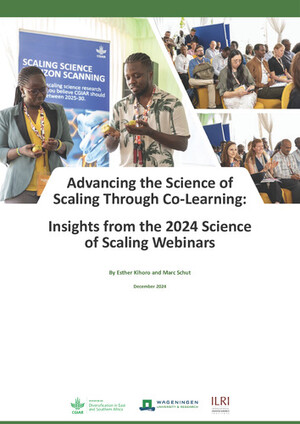
A quantitative model for understanding and exploring land use decisions by smallholder agrowetland households in rural areas of East Africa
Abstract
Land use change in rural areas often result from the decision-making of individual farming households.It is a complex process that operates at different temporal and spatial scales through the interactions between diverse drivers. Main drivers of wetland conversion for agricultural production in Sub-Saharan Africa (SSA) and those influencing its land use change have been explored in the past. But often the factors have not been explicitly considered in these studies. Tools and concepts that consider the decision-making processes of farmers have become common approaches used in studies to understand and explore changes in land use. This paper describes an empirical model framework to analyse land development and use processes as a result of individual farmer’s decision-making in small wetlands in SSA. The model framework uses information on the drivers of land use change, landscape classification, and household typologies. Processes of land conversion, as well as of probabilistic and heuristic decision-making were integrated in the framework. The model framework was applied to a case study on a sub-humid lowland floodplain in Tanzania, where land conversion, fallow, and use change processes are shaping the structure of the wetland. The scenario of increasing land scarcity on upland was simulated to explore how defined processes will respond to the rising pressure exerted on the wetland. Land conversion increased by 10 percent, fallow practices decreased by one-third to half. Wetland fields were defragmented due to increasing demand for crop production in the wetland. Shifts in relative distributions of farm types were simulated within and between wetland cluster groups, where all upland dependent crop-based farmers disappeared. The application revealed the potential of including individual decision-making in understanding the heterogeneity and functioning of such systems. The application possibilities and limitations of the model as well as challenges to model complex interactions in land use systems are discussed. The study raised the need to improve the means by which socio-environmental systems are anticipated and managed in the face of likely or projected changes in demography, economics, and resources at different scales
Citation
Sakane, N., Wijk, M.T. van, Langensiepen, M. and Becker, M. 2014. A quantitative model for understanding and exploring land use decisions by smallholder agrowetland households in rural areas of East Africa. Agriculture, Ecosystems and Environment 197:159-173










